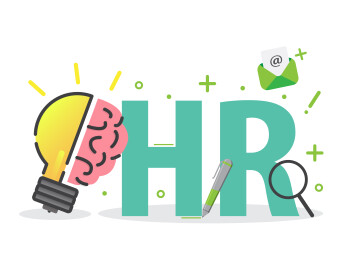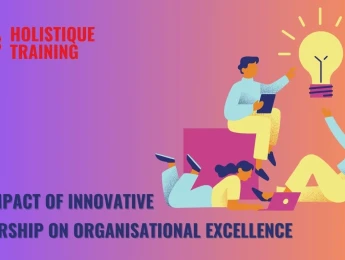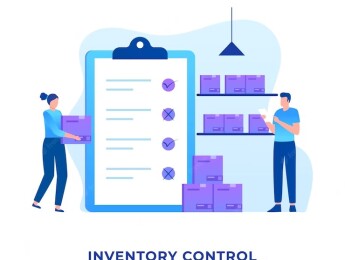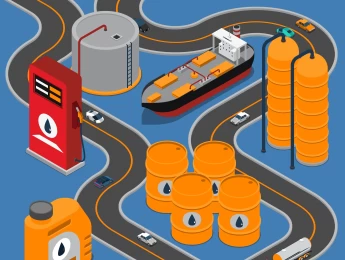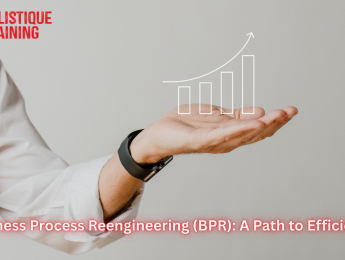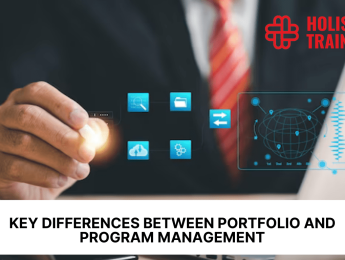- Table of Contents
- What Is a Total Rewards Strategy?
- What Is a Total Rewards Statement?
- The Five Components of Total Rewards
- 1. Compensation
- 2. Benefits
- 3. Recognition
- 4. Career Development
- 5. Work Environment
- Harmony in Components: The Synergy Effect
- Personalisation for Diverse Needs
- Long-Term Impact: Beyond the Immediate Gain
- How Does a Total Rewards Strategy Relate to Maslow’s Hierarchy of Needs?
- 1. Physiological Needs: Compensation
- 2. Safety Needs: Benefits
- 3. Love and Belonging: Recognition
- 4. Esteem Needs: Career Development
- 5. Self-Actualisation: Work Environment
- The Benefits of a Total Rewards Strategy
- Shifting the Paradigm: From Cost to Investment
- Attracting Top Talent
- Enhancing Employee Satisfaction and Retention
- Boosting Productivity and Innovation
- Nurturing a Positive Organisational Culture
- Adapting to Diverse Workforce Needs
- Aligning with Corporate Social Responsibility (CSR)
- Creating a Competitive Advantage
- How Do You Create a Total Rewards Strategy?
- 1. Assess Your Current Situation
- 2. Define Your Objectives
- 3. Customise for Your Organisation
- 4. Develop a Comprehensive Communication Plan
- 5. Consider Total Rewards Statements
- 6. Implement Flexibility and Personalisation
- 7. Monitor and Adjust Regularly
- 8. Seek Legal and Regulatory Compliance
- 9. Evaluate Return on Investment (ROI)
- 10. Communicate Changes Effectively
- In Conclusion
Picture this: a workplace that compensates its employees with a salary and goes above and beyond to create an environment where everyone feels valued, motivated, and fulfilled. This isn't just a utopian vision; it's the essence of a well-crafted Total Rewards Strategy. In this comprehensive exploration, we'll dive into the intricacies of Total Rewards, from understanding its components to crafting a strategy that resonates with Maslow's Hierarchy of Needs.
What Is a Total Rewards Strategy?
A Total Rewards Strategy is more than just a paycheck. It's a holistic approach to employee well-being and satisfaction that extends beyond traditional compensation. This strategic framework encompasses everything employees receive in exchange for their time, talent, and contribution to an organisation. Beyond salary, it includes benefits, recognition, career development opportunities, work-life balance, and a positive work environment.
What Is a Total Rewards Statement?
Imagine having a clear, concise document that lays out all the elements of your compensation and benefits in one place. That's precisely what a Total Rewards Statement does. It goes beyond the paycheck, providing a detailed breakdown of an employee's total compensation package. This statement helps employees understand the full value of their contributions and fosters transparency, ultimately enhancing their engagement and satisfaction.
The Five Components of Total Rewards
To truly grasp the essence of a Total Rewards Strategy, let's break down its five key components:
1. Compensation
At the heart of any employment relationship is an employee's monetary compensation. However, a Total Rewards Strategy views compensation as more than just a paycheck. It encompasses the entire spectrum of financial rewards, including base salary, bonuses, and any other financial incentives. A fair and competitive compensation structure is essential for attracting and retaining top talent. It forms the foundation upon which the other components of the Total Rewards Strategy are built.
2. Benefits
Healthcare, retirement plans, and other non-monetary perks fall under the benefits umbrella. These offerings contribute to an employee's overall well-being and security, addressing Maslow's safety needs. A robust benefits package safeguards physical health and provides a safety net for unforeseen circumstances. It communicates to employees that their employer cares about their long-term welfare, fostering a sense of security and loyalty.
3. Recognition
Recognition is the unsung hero of employee motivation. It goes beyond the realms of financial compensation, encompassing verbal praise, awards, and other forms of acknowledgement. A well-structured recognition program boosts morale and fosters a positive work culture. Employees who feel appreciated and valued for their contributions are more likely to be engaged, motivated, and committed to their work.
4. Career Development
Employees are not static entities; they seek opportunities for growth and advancement. A Total Rewards Strategy acknowledges this innate desire through the component of career development. This includes training programs, mentorship initiatives, and pathways for skill enhancement. Investing in employees' professional growth enhances their capabilities and creates a sense of loyalty. It communicates that the organisation is committed to helping individuals reach their full potential.
5. Work Environment
A positive work environment is the foundation upon which the other components of a Total Rewards Strategy rest. It encompasses factors such as work-life balance, flexible schedules, and a supportive company culture. This component recognises that employees are not just cogs in a machine; they are individuals with personal lives and aspirations. A healthy work environment contributes to employee satisfaction, reduces stress, and creates a conducive atmosphere for creativity and innovation.
Harmony in Components: The Synergy Effect
The true power of a Total Rewards Strategy lies in the synergy among its components. It's not just about offering competitive compensation or a robust benefits package in isolation. When these components work harmoniously, they create an environment where employees feel a profound sense of appreciation and support.
Consider a scenario where an organisation provides competitive compensation but lacks a recognition program. Employees may feel undervalued and overlooked. On the other hand, an organisation with a strong recognition culture but subpar compensation may struggle to retain top talent. It's the strategic alignment and synergy of these five components that create a holistic and powerful Total Rewards Strategy.
Personalisation for Diverse Needs
The beauty of the Total Rewards Strategy lies in its flexibility and adaptability to the diverse needs of a modern workforce. Different individuals have different priorities. While some may prioritise career development, others may emphasise a positive work environment or comprehensive benefits. A successful Total Rewards Strategy recognises this diversity and allows for personalisation, ensuring that employees feel seen and valued for their unique contributions.
Long-Term Impact: Beyond the Immediate Gain
While the immediate impact of a Total Rewards Strategy is evident in increased employee satisfaction and engagement, its long-term effects are equally significant. Reduced turnover rates, improved organisational reputation, and a workforce that is aligned with the company's goals contribute to sustained success. This long-term impact positions a Total Rewards Strategy not as a quick fix but as a foundational element for an organisation's enduring prosperity.
The five components of a Total Rewards Strategy are not isolated elements; they are interconnected threads that weave a tapestry of employee satisfaction, engagement, and organisational success. By recognising and addressing the diverse needs of individuals, organisations can create an environment where employees thrive, driving innovation and contributing to the business's overall success. It's not just about offering rewards; it's about crafting a holistic strategy that resonates with the aspirations and well-being of the workforce, transforming the employer-employee relationship into a dynamic partnership for mutual growth and prosperity.
How Does a Total Rewards Strategy Relate to Maslow’s Hierarchy of Needs?
Abraham Maslow's Hierarchy of Needs has long been a guiding framework for understanding human motivation. Maslow proposed that individuals are motivated by a hierarchy of needs, arranged in a pyramid structure. At the base are the physiological needs, followed by safety, love and belonging, esteem, and, at the pinnacle, self-actualisation. A Total Rewards Strategy aligns seamlessly with Maslow's theory by addressing multiple layers of these needs, creating a holistic approach to employee motivation and satisfaction.
1. Physiological Needs: Compensation
At the base of Maslow's pyramid are physiological needs such as food, shelter, and other essentials for survival. In the context of the workplace, these needs translate into financial security. A well-structured compensation package is the foundation of a Total Rewards Strategy, providing employees with the means to meet their basic needs. It's not just about the amount on the paycheck; it's about ensuring that employees feel fairly compensated for their efforts, laying the groundwork for a sense of financial stability.
2. Safety Needs: Benefits
Moving up the hierarchy, Maslow identified safety needs, encompassing security, stability, and protection from potential harm. In the corporate realm, benefits are pivotal in addressing these safety needs. Health insurance, retirement plans, and other non-monetary perks contribute to employees' sense of security. A robust benefits package safeguards their physical well-being. It provides a safety net for unforeseen circumstances, fostering a workplace environment where individuals can focus on their tasks without undue concern for their personal welfare.
3. Love and Belonging: Recognition
The third level in Maslow's hierarchy is the need for love and belonging, which extends beyond personal relationships to include a sense of belonging within a community or workplace. A Total Rewards Strategy acknowledges this need through recognition. Recognition goes beyond monetary rewards, encompassing verbal praise, awards, and other forms of acknowledgement. When employees feel appreciated and valued for their contributions, they develop a sense of belonging within the organisation. This not only strengthens their commitment but also enhances teamwork and collaboration.
4. Esteem Needs: Career Development
Moving further up the pyramid, Maslow identified esteem needs, which involve achieving a sense of accomplishment and gaining the respect of others. A well-rounded Total Rewards Strategy addresses these needs through opportunities for career development. This includes training programs, mentorship initiatives, and avenues for skill enhancement. When employees see that their organisation invests in their professional growth, they experience a boost in self-esteem. This, in turn, contributes to increased job satisfaction and a sense of fulfilment.
5. Self-Actualisation: Work Environment
At the pinnacle of Maslow's Hierarchy is the concept of self-actualisation, representing the realisation of one's full potential and pursuit of personal growth. A positive work environment embodies self-actualisation in the context of a Total Rewards Strategy. This includes factors such as a healthy work-life balance, flexible schedules, and a supportive company culture that encourages creativity and innovation. A work environment that fosters self-actualisation attracts top talent and propels individuals to go beyond their perceived limitations, driving overall organisational success. According to FlexJobs' 2022 Career Pulse Survey, 63% of respondents prioritise a job offering improved work-life balance over higher pay.
In essence, a Total Rewards Strategy comprehensively addresses the diverse needs outlined in Maslow's Hierarchy to create a workplace that not only satisfies basic requirements but also inspires individuals to reach their highest potential. It transforms the traditional employer-employee relationship into a dynamic partnership, where the organisation becomes a platform for personal and professional growth, aligning seamlessly with Maslow's vision of human motivation.
The Benefits of a Total Rewards Strategy
In today's business world's fast-paced and competitive landscape, attracting and retaining top talent has become a strategic imperative for organisations. It's no longer sufficient to view employees as mere resources; they are invaluable assets that drive innovation, productivity, and, ultimately, organisational success. A Total Rewards Strategy emerges as a pivotal tool in this paradigm shift, going beyond the conventional approaches to employee compensation and introducing a comprehensive framework that addresses the multifaceted needs of individuals within the workplace. Let's delve into why a Total Rewards Strategy is not just a trend but a crucial component of a thriving, forward-thinking organisation.
Shifting the Paradigm: From Cost to Investment
Traditionally, organisations viewed employee compensation as a cost to be managed. A Total Rewards Strategy reframes this perspective, positioning employees as investments rather than expenses. By recognising and rewarding employees comprehensively, organisations signal a shift towards a people-centric approach. This transformation is not merely linguistic; it alters the organisational mindset, fostering a culture where employees are seen as contributors to the company's success rather than as financial liabilities.
Attracting Top Talent
In a global marketplace where the competition for skilled professionals is fierce, attracting top talent is a perpetual challenge. A well-crafted Total Rewards Strategy becomes a powerful magnet for high-calibre individuals. Beyond a competitive salary, it showcases an organisation's commitment to the overall well-being of its employees. From enticing benefits to opportunities for growth, a robust Total Rewards package sends a compelling message that the organisation values its workforce, making it an attractive destination for top-tier talent.
Enhancing Employee Satisfaction and Retention
Employee satisfaction is the bedrock of retention. A Total Rewards Strategy contributes significantly to job satisfaction by addressing various aspects of the employee experience. When employees feel adequately compensated, recognised for their contributions, and given growth opportunities, they are likelier to stay with the organisation. In fact, according to GFoundry, firms offering more appealing benefits and compensation packages experienced a significant 53% reduction in their turnover rate. Reduced turnover rates translate not only to cost savings in recruitment and training but also to retaining institutional knowledge and preserving a positive workplace culture.
Boosting Productivity and Innovation
Engaged and satisfied employees are more productive and innovative. A Total Rewards Strategy acknowledges that individuals are motivated by more than just financial incentives. Recognition, career development opportunities, and a positive work environment contribute to a motivated workforce. When employees feel valued and supported in their professional and personal growth, they are likelier to go above and beyond, fostering a culture of innovation that propels the organisation forward.
Nurturing a Positive Organisational Culture
Organisational culture is shaped by the values, beliefs, and behaviours that define how people interact within a workplace. A Total Rewards Strategy shapes and nurtures a positive organisational culture. It communicates to employees that their contributions are acknowledged and rewarded, creating a sense of belonging and pride. A positive culture improves the overall work environment and becomes a key differentiator for attracting and retaining talent in a competitive market.
Adapting to Diverse Workforce Needs
The modern workforce is increasingly diverse, with individuals spanning different generations, backgrounds, and lifestyles. A one-size-fits-all approach to employee rewards is no longer effective. A Total Rewards Strategy recognises and adapts to the diverse needs of employees. It considers factors such as generational preferences, work-life balance, and varied career aspirations, ensuring that the organisation remains responsive to the evolving expectations of its workforce.
Aligning with Corporate Social Responsibility (CSR)
In an era where corporate social responsibility is gaining prominence, employees are increasingly drawn to organisations prioritising ethical practices and community engagement. A Total Rewards Strategy incorporating CSR initiatives aligns with the values of socially conscious employees. It goes beyond individual rewards to contribute to a larger sense of purpose, fostering employee pride and loyalty to an organisation that actively participates in positively impacting society.
Creating a Competitive Advantage
A Total Rewards Strategy becomes a strategic differentiator in a business environment characterised by constant change, uncertainty, and global competition. Organisations that invest in their employees' holistic well-being gain a competitive edge. A comprehensive Total Rewards package is not easily replicated by competitors, giving organisations a unique selling proposition that extends beyond their products or services.
A Total Rewards Strategy is not a mere trend but a fundamental shift in how organisations approach their most valuable asset—their people. By acknowledging and addressing the diverse needs of individuals, organisations can create an environment where employees feel valued, motivated, and inspired to contribute their best. It's not just about attracting talent; it's about cultivating a workplace where individuals thrive, pushing the boundaries of what they thought possible. In doing so, a Total Rewards Strategy becomes a cornerstone for organisational success, transforming the employer-employee relationship into a dynamic partnership for mutual growth and prosperity.
How Do You Create a Total Rewards Strategy?
Crafting an effective Total Rewards Strategy requires a thoughtful and strategic approach. Here's a step-by-step guide to help you create a plan that resonates with your organisation and its employees:
1. Assess Your Current Situation
Before creating a Total Rewards Strategy, it's crucial to understand your starting point. Conduct a comprehensive analysis of your current compensation and benefits structure. Gather data on employee satisfaction levels, turnover rates, and feedback to identify improvement areas. This assessment provides a baseline for developing a strategy that addresses specific organisational requirements.
2. Define Your Objectives
Clearly outline the objectives you aim to achieve with your Total Rewards Strategy. Whether it's attracting top talent, improving employee retention, fostering a culture of innovation, or aligning with organisational values, having well-defined goals will guide the development and implementation of your strategy. These objectives serve as a compass, ensuring that your Total Rewards Strategy aligns with the organisation's overarching mission and vision.
3. Customise for Your Organisation
There's no one-size-fits-all solution when it comes to Total Rewards. Tailor your strategy to align with your organisation's values, industry standards, and workforce preferences. Consider demographic factors, such as the diverse needs of different generations within your workforce. A Total Rewards Strategy that reflects the unique identity of your organisation is more likely to resonate with employees and contribute to a positive workplace culture.
4. Develop a Comprehensive Communication Plan
Transparency is key to the success of any Total Rewards Strategy. Develop a robust communication plan to ensure that employees are well informed about the details of the strategy. Clearly articulate the components of the Total Rewards package, emphasising the monetary aspects and the broader benefits, recognition programs, career development opportunities, and the positive work environment your organisation offers. An informed workforce is likelier to appreciate and make the most of the rewards provided.
Metric | Description |
Employee Engagement | Measure of workforce commitment and satisfaction. |
Retention Rates | Percentage of employees retained over a period. |
Productivity Metrics | Assess impact on individual and team performance. |
Recruitment Success | Evaluate quality and speed of hiring processes. |
Cost-Benefit Analysis | Analyse the financial impact on the organisation. |
Table 1: Metrics to measure the effect of your Total Rewards Strategy5. Consider Total Rewards Statements
Consider implementing Total Rewards Statements as part of your communication strategy. These statements provide employees with a personalised breakdown of their total compensation and benefits, helping them understand the full value of their contributions to the organisation. Total Rewards Statements contribute to transparency and empower employees by showcasing the tangible and intangible rewards they receive, fostering a sense of pride and appreciation.
6. Implement Flexibility and Personalisation
Recognise that your workforce is diverse, with individuals having different priorities and preferences. Implement flexibility in your Total Rewards Strategy to allow for personalisation. Consider offering flexible work arrangements, personalised benefits options, and career development plans tailored to individual aspirations. This flexibility ensures that the Total Rewards Strategy caters to the diverse needs of your workforce, enhancing its overall effectiveness. Owl Labs' 2022 State of Remote Work Report reveals that 52% of employees are willing to accept a pay reduction of 5% or more in exchange for the flexibility to work from any location of their choice, which further emphasises the importance of personalisation in a Total Rewards Strategy.
7. Monitor and Adjust Regularly
The business landscape is dynamic, and so are the needs and expectations of employees. Regularly assess the effectiveness of your Total Rewards Strategy through employee feedback, performance metrics, and market comparisons. Be prepared to adjust your strategy to stay competitive and responsive to evolving circumstances. Continuous monitoring ensures that your Total Rewards Strategy remains relevant and impactful over time.
8. Seek Legal and Regulatory Compliance
Ensure that your Total Rewards Strategy complies with legal and regulatory requirements. Stay informed about changes in labour laws, tax regulations, and industry standards that may impact your strategy. Consulting with legal and HR experts can help you navigate the complex landscape of employment regulations, ensuring that your Total Rewards Strategy is attractive to employees and legally sound.
9. Evaluate Return on Investment (ROI)
Conduct a thorough cost-benefit analysis to assess the return on investment (ROI) of your Total Rewards Strategy. Consider both the direct and indirect costs associated with the strategy and evaluate its impact on organisational performance. Factors such as reduced turnover costs, increased productivity, and improved employer branding contribute to the overall ROI of your Total Rewards Strategy.
10. Communicate Changes Effectively
If adjustments to the Total Rewards Strategy are made, communicate these changes effectively to the workforce. Clearly explain the reasons behind the modifications, how they align with organisational goals, and the benefits they bring to employees. Effective communication ensures that employees are not only aware of changes but also understand the strategic rationale behind them, fostering a sense of trust and alignment.
Creating a Total Rewards Strategy is not a one-time task; it's an ongoing process that requires careful planning, communication, and adaptability. By aligning the strategy with organisational objectives, customising it to meet the workforce's diverse needs, and fostering transparency, organisations can create an environment where employees feel valued, motivated, and engaged. A well-crafted Total Rewards Strategy goes beyond being a set of perks; it becomes a dynamic force that propels both individual and organisational success.
In Conclusion
In a world where attracting and retaining top talent is more challenging than ever, a Total Rewards Strategy stands out as a beacon of employee-centricity. By acknowledging and addressing the diverse needs of individuals, organisations can create an environment where employees thrive, and businesses flourish. It's not just about the paycheck; it's about unlocking the full potential of every individual within the organisation, creating a workplace that goes beyond meeting basic needs and inspires greatness.
In your journey to implement an impactful Total Rewards Strategy, navigating the nuances of employee benefits, compensation, and rewards is essential. Elevate your expertise with our comprehensive course, ‘Effective Management of Employee Benefits, Compensation & Rewards.’ Delve into the intricacies of crafting a strategy that resonates with diverse workforce needs and organisational goals. Equip yourself with the tools to attract, retain, and motivate top talent. Elevate your organisation's success by mastering the art of comprehensive employee engagement. Enrol now and empower yourself to create a workplace where both individuals and businesses thrive.









